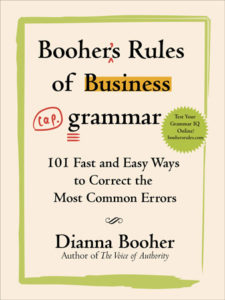


While lead generation may be the most talked-about method of landing new clients, the business proposal is the final key step to reeling them in.
A well-written business proposal can be your ticket to continuous, prosperous partnerships or client relationships. They help you land the right projects on terms that work for you.
But the task of writing the perfect proposal can often feel daunting. The following formula ensures that you can write proposals that convert—not just something that looks well designed and professional. Read on to become a proposal writing pro!
Your title page is your first opportunity to set the tone. So put some thought into how you would like to present yourself. By putting together a well-thought-out title page you are showing that you take a professional approach to your work. Your title page should include your company’s name, contact information, date of submission, the client’s name, and the client’s job title in a clear and organized manner. You also may want to add a photo of yourself, your executive team, or your company logo to add a more personal touch.
Following the title page add a comprehensive table of contents. This helps your potential client easily navigate your proposal.
You may or may not need a separate introduction. Often the introduction tells the client what the client already knows; therefore, the reader skips it. But if you cannot incorporate introductory elements into the executive summary, then add a brief formal introduction to make a lasting impression. A good introduction should offer insight into what your company does, what sets it apart from the competition, and why you are best suited for the job ahead. Highlight your commitment and enthusiasm for the proposed project
Above all, keep it brief—only 3 or 4 sentences at most!
Assume that all readers will read your executive summary. It’s your hook to reel them in. Present your sales pitch, outlining your client’s needs and how you can be a crucial partner in achieving their goals. You can dive a little deeper into your areas of expertise. Talk about similar problems you’ve solved for other clients and how your knowledge can bring value to their business. Summarize the critical aspects of your proposal, answering who, what, when, why, and how your services will help achieve your client’s goals.
Now that you’ve established who you are and why you’re the best choice for the project at hand, it’s time to get into the nitty-gritty of how you’re going to accomplish the project’s goals. First, explain your recommended course of action for the project. Then, give the client a timeline for reaching selected milestones and show the steps you’ll take to reach each goal. Use this section as an opportunity to show that you have a deep understanding of the client’s needs and a comprehensive plan for tackling them.
At this point, the client should have a pretty good understanding of who you are and what you offer. Concrete proof of the value you’ve brought to other projects is the next logical step to closing the deal. This is where you let your work speak for itself by offering examples of previous work you’ve done for similar clients: Testimonials from past clients. Reviews on your services. Awards. Patents. Publications. Anything else that can serve as an example to show you are more than just ideas and talk.
Some proposers opt for a quick note stating that samples can be found on a website or portfolio. But don’t make your potential client work to find the information—or take the chance they won’t bother to look elsewhere. It’s typically much more effective to provide the proof in the proposal itself.
In addition to the executive summary, it’s also one of the most crucial parts of your proposal.
Finding the right price requires a delicate balance on charging what you are worth, while at the same time not pricing yourself out of the competition. Some methods for helping navigate this area without sending a potential client into sticker shock is by offering a few different pricing tiers for different levels of service.
Clarify exactly what the client will be getting when entering into a contract with you. By setting clear and concise terms and conditions in the proposal, you can avoid awkward conversations later. Some examples of caveats and conditions you may want to outline here include:
Now that you have sold them on your services, give the client a quick overview of the next steps to get the project rolling: Meetings that need to take place to fine-tune the details. Contacts that need to be signed. Kick-off dates. Deposits to be paid by X date before the project begins.
Your proposal does not need another conclusion—in the sense of restating your offer or benefits. All that information has already been included in the executive summary. You can simply end your proposal with the “next steps” section.
But you may want to add a final send-off sentence or two with your last word to the client before they make their final decision. If you do add a wrap-up, be sure to make it a true “greatest hits” of all their benefits of the project and reasons to do business with you.
Although business proposals are commonplace in many industries, many writers miss the opportunity to make them really effective. Use the tactics in this guide to make your business proposals work as hard as you do to land new clients.
Ensure that your proposal is error free with Booher’s Rules of Business Grammar: 101 Fast and Easy Ways to Correct the Most Common Errors.
